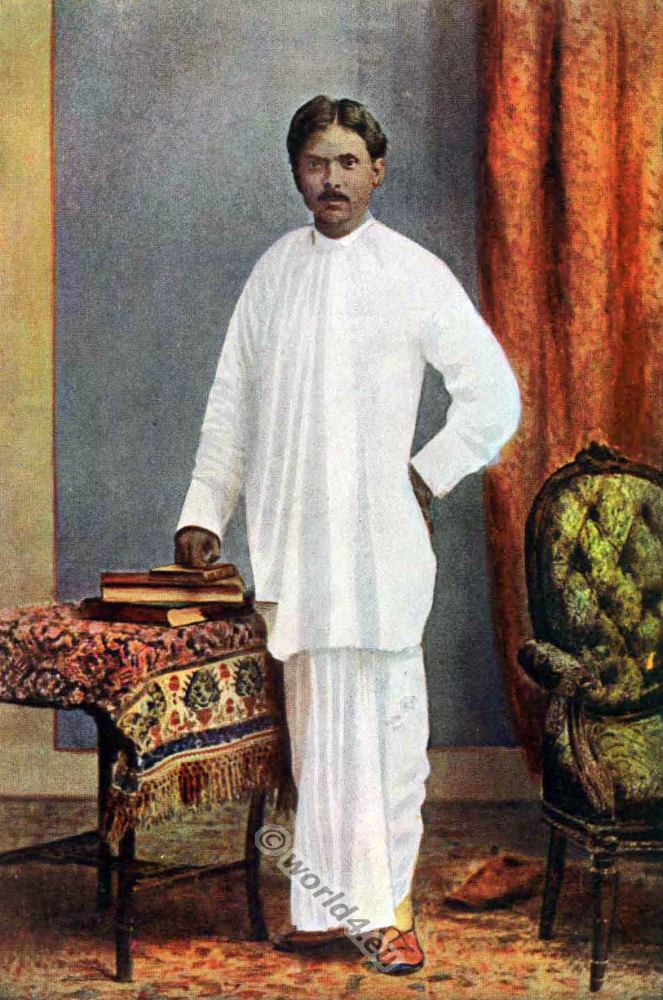A BRAHMAN LADY.
India 19th century.
Ladies in all parts of the world are proverbially coy, and none are more so than Hindus -unless it be Muslims. It is against the custom of the higher castes to be photographed at all, and only by dint of much persuasion can they be induced to overcome their prejudices in this respect, and then it is necessary for them to be accompanied by their lawful spouse.
The habit of piercing the nose and ornamenting it with rings is usually observed among all classes of native women, the more wealthy among them frequently wearing jewels of great value in their noses.
The fact that European visitors are amused at a person whose nose is pierced for the purposes of adornment, and yet regard an ear-ring as an every-day affair, exemplifies, in a marked manner, what a curious and narrow-minded tyrant is “custom.” On the wrists are worn bangles of gold, silver or glass, while the ankles are adorned with anklets usually made of silver. The feet, being bare, present a further opportunity for adornment, which is not allowed to be lost, and massive silver rings are therefore frequently worn upon some of the toes of each foot.
In India, as indeed all over the world, it is the women who wear the most brilliant costumes. But the French cynic, who described the country as one where “the flowers have no smell, the fruits no taste, and the women no modesty,” was very much mistaken in his estimate of the latter.
True it is that a Hindu woman, of whatever class’, feels no shame in exposing her nether limbs to the knee, but it is to her a fearful and a wonderful thing that English memsahibs should exhibit themselves in public in an attire which reveals to the world a large proportion of the upper part of their bodies. Even a coolie woman -be she young or old – will draw her sari carefully over the top of her head and round her neck in the company of a stranger. Faults the women of India may have, but immodesty is certainly not among them.
A native girl is usually betrothed at a very tender age, and, as this ceremony is binding upon both the contracting parties, it is usually alluded to as a “marriage.” Ten years of age – or younger – is not considered an inappropriate time of life to perform this ceremony. But, as a matter of fact, the juvenile bride does not live with her husband until she arrives at maturity, and, although this is necessarily at an earlier period in her existence than in that of a European, it is a mistake to suppose that Indian’ women habitually consort with their spouses before they are physically fit to do so. But there are manifold exceptions to this rule, and the exceptions constitute a great evil, against which social reformers have nobly battled for some years past.
Source: Typical pictures of Indian Natives. By F. M. Coleman, 1897.
Related
Discover more from World4 Costume Culture History
Subscribe to get the latest posts sent to your email.








